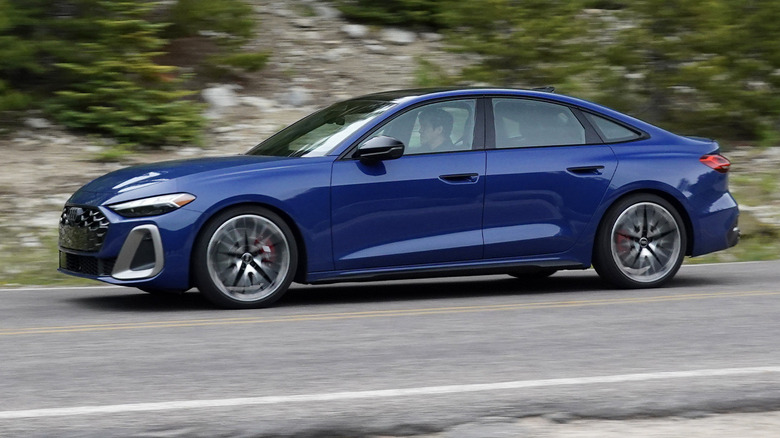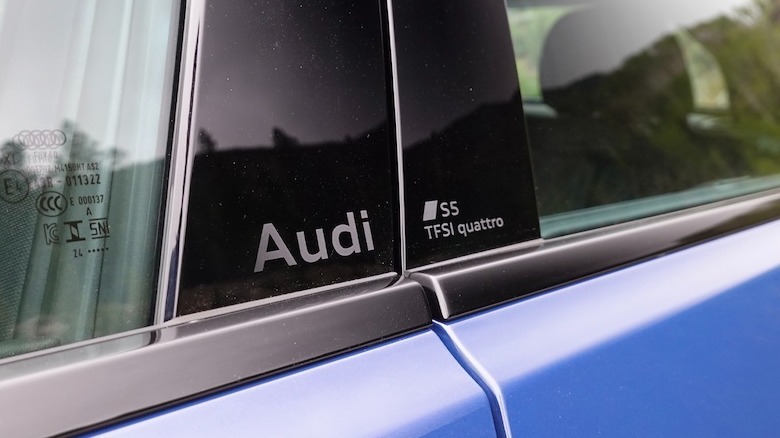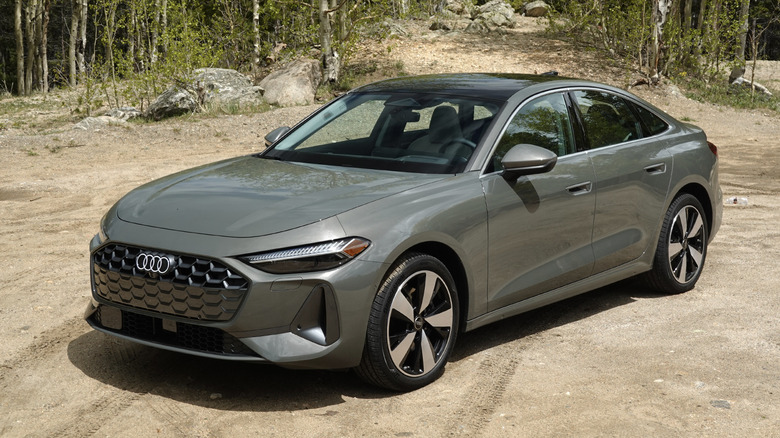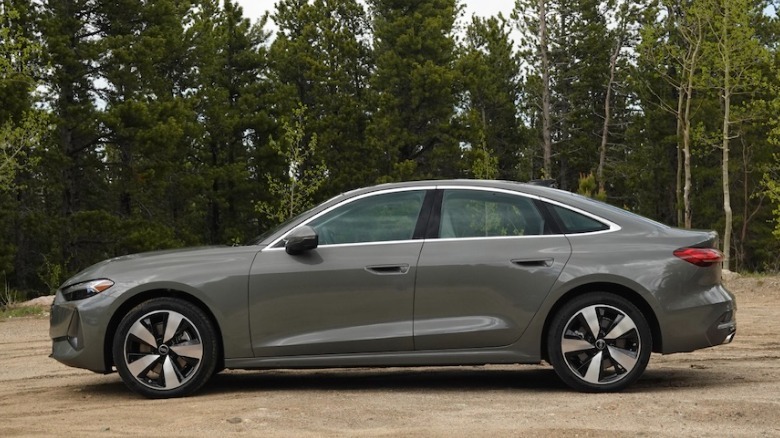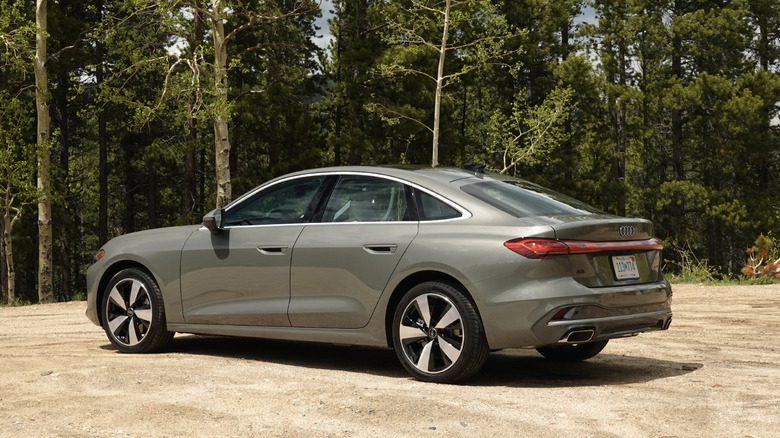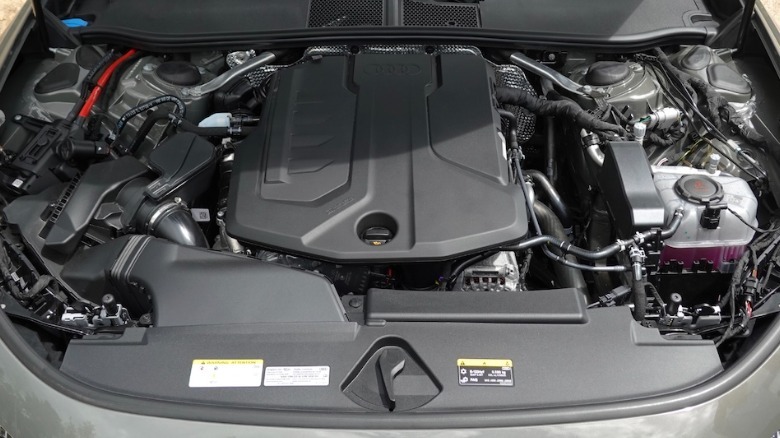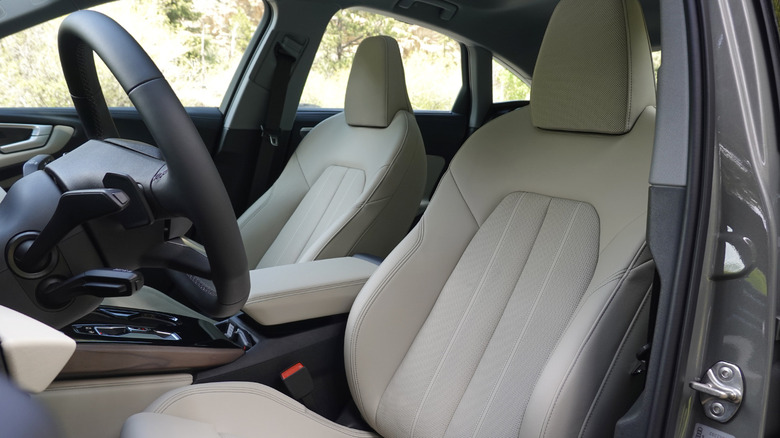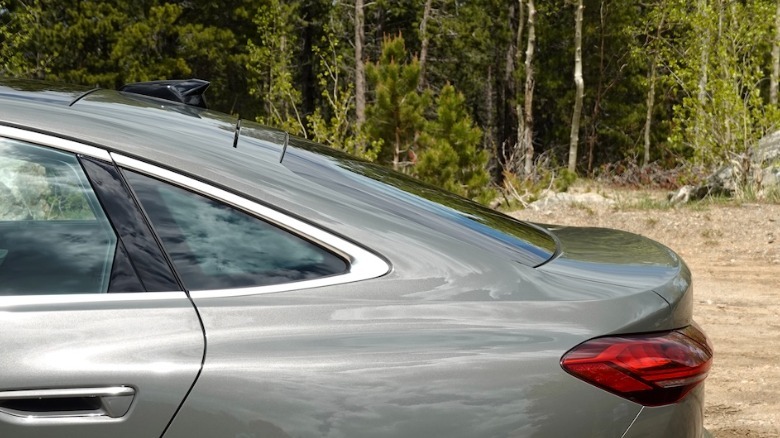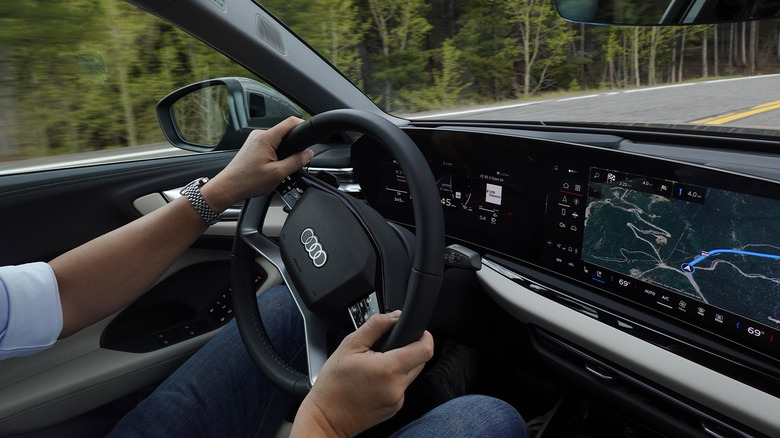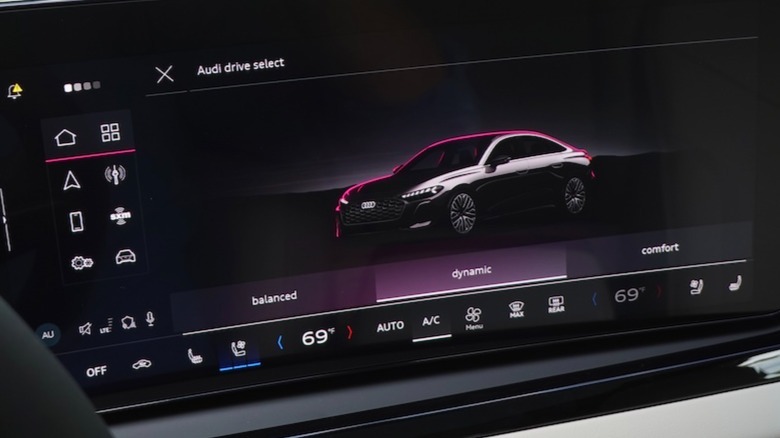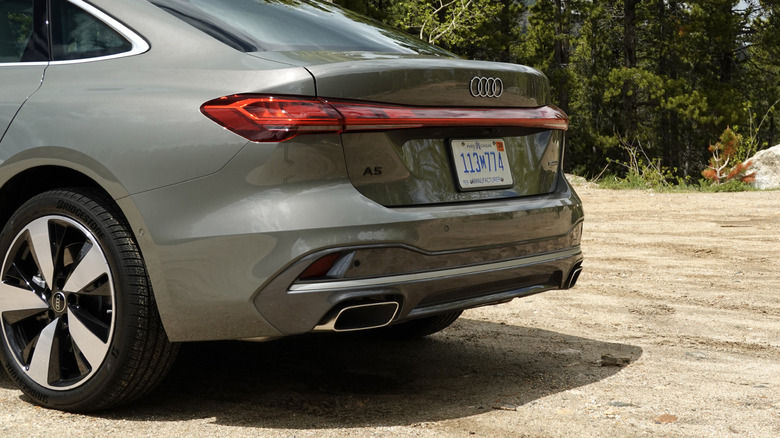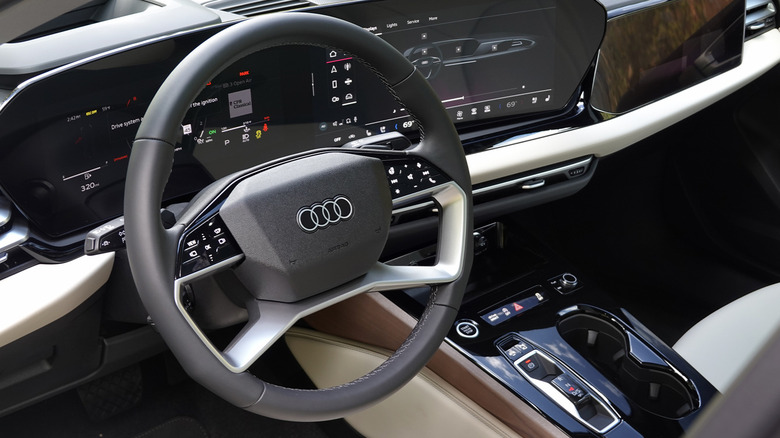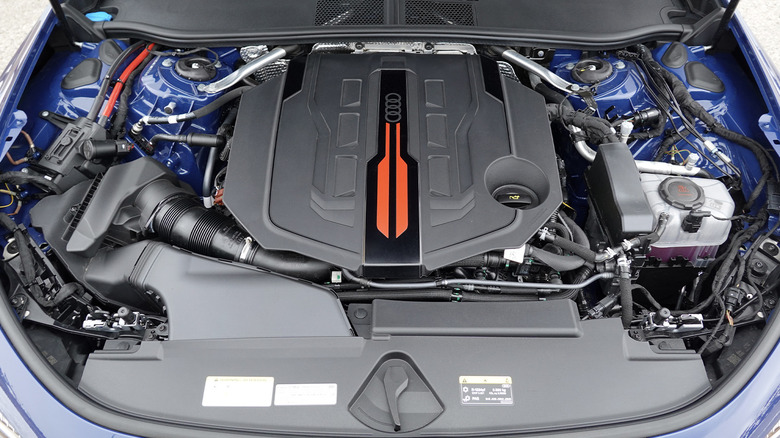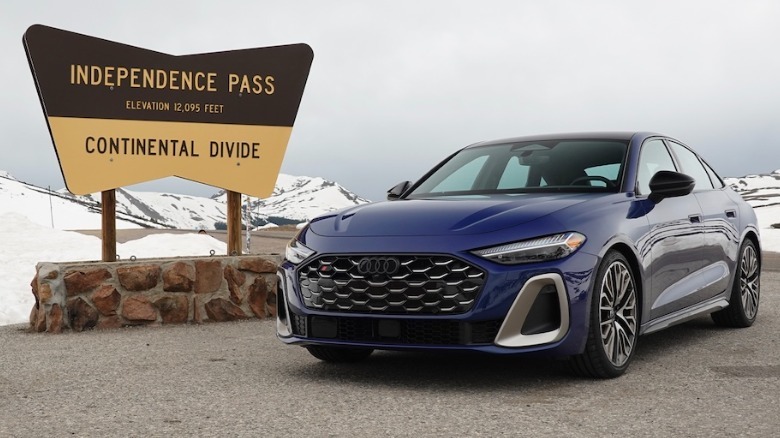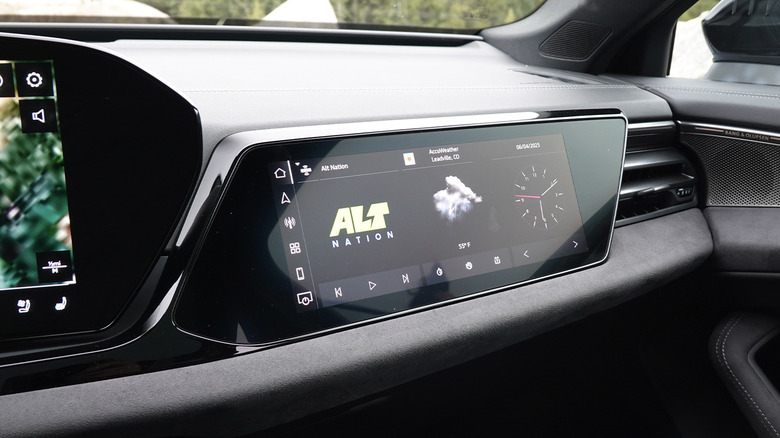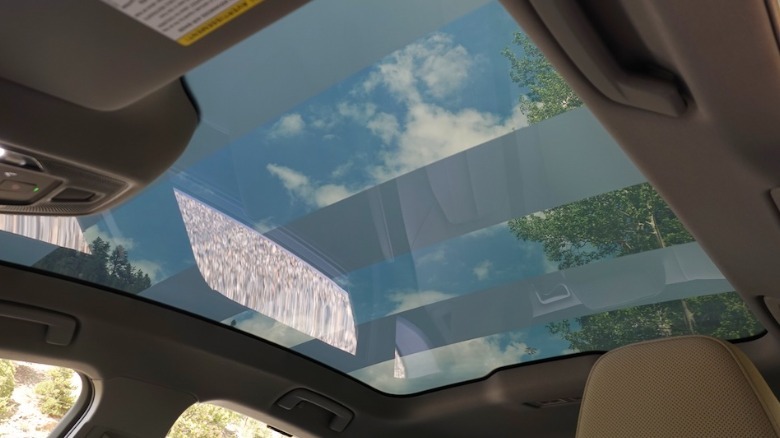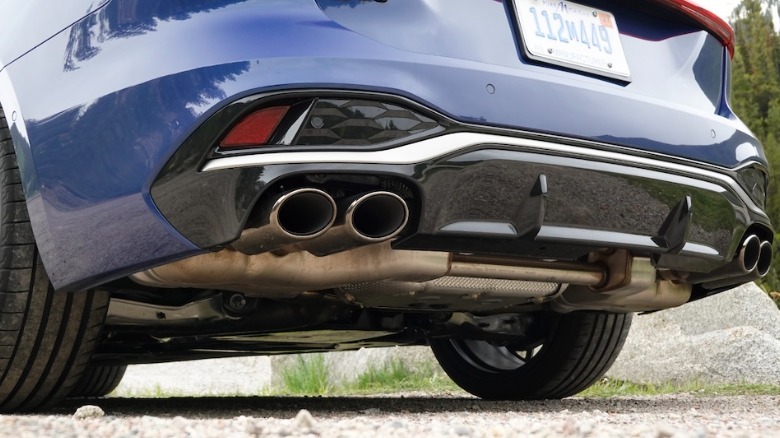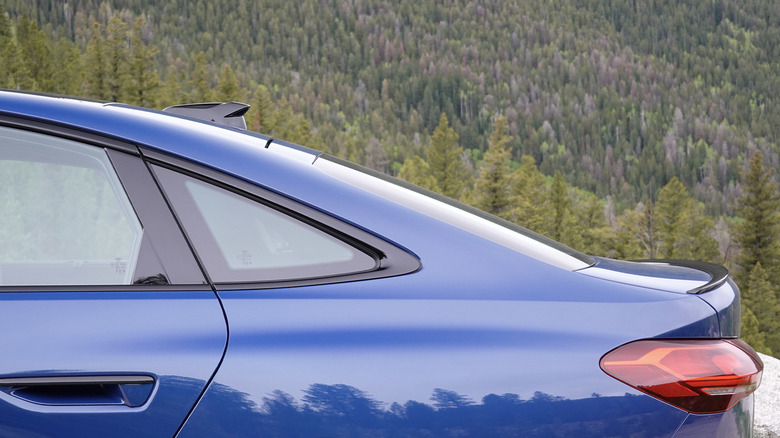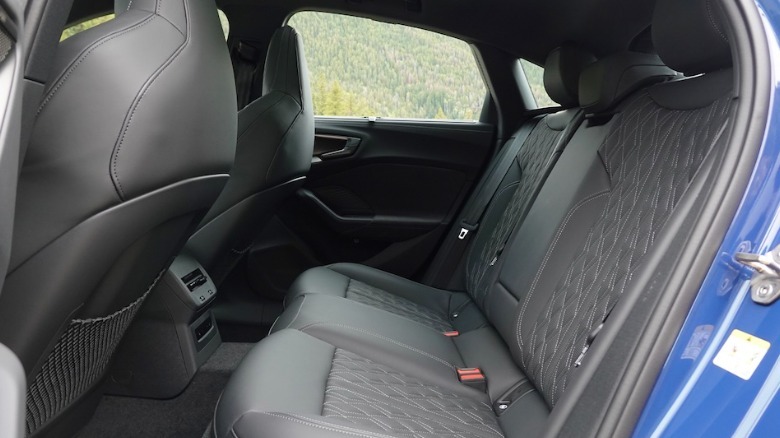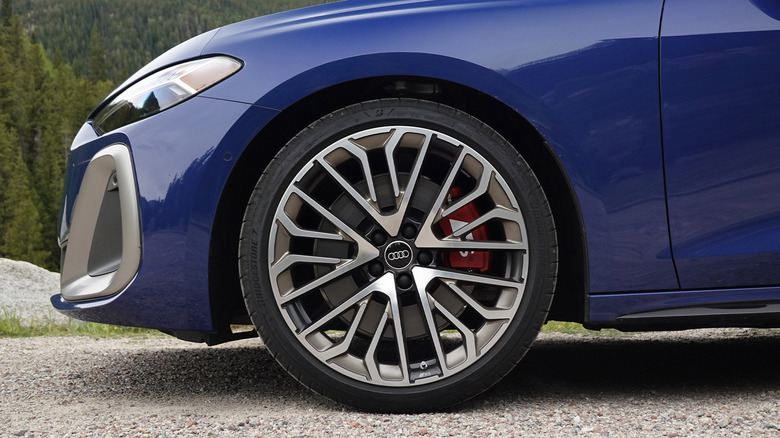2025 Audi A5 And S5 First Drive: A Convincing Case Against The Crossover
Over three decades ago, in 1994, Audi replaced the boxy 80 with the all-new A4. This generational leap helped to catapult Germany's slightly less well-known automaker into a new direction, one bolstered by S4 and Avant variants that followed and further upped the game. In many ways, the A4 singlehandedly helped Audi break into the US market, thanks to an impressive combination of styling presence, all-weather capability, and interior luxury—while simultaneously doubling down on Volkswagen AG's increasingly substantial corporate parts sharing, and profits boosting, efforts.
Now, once again in the spirit of full disclosure, I must admit to former ownership of a Mk1 Audi TT from the early-2000s—quite possibly my favorite Audi era—but also an A3 2.0T Quattro from 2016. I owned neither particularly long, in the grand scheme of things: a little over two years for the TT and a little more than that for the A3. And in fairness, both employed the transverse engine and Haldex-based Quattro all-wheel-drive layout shared with Volkswagen's contemporary Golf/GTI chassis.
Remembering the legendary A4
Both performed stupendously in snow, while nailing a perfect middle ground between efficiency and fun. Yet I also learned quickly how much lingering understeer bias required a mindset shift to prioritize early push-pull dynamics for any rally-inspired driving. As such, I always harbored curiosity about how an A4 drove by comparison—not least because my snobbish Audi mechanic always sneered at the A3, in particular, while describing the "real" Quattro layout of his contemporary S4, what with its more desirable longitudinal engine and more traditional Torsen differential setup.
In those days, I took Johnny's knowledge as gold dust versus my own chicken feed. And though I drove an A4 or two over the subsequent years, it was never enough to answer the lingering questions in my mind. All of which only contributed to my dismay when Audi last year axed the A4 for model year 2025 in favor of both a new odd-even numerology quest, generally, and the A5/S5 Sportback, in particular.
Bigger means better, right?
All of which, suffice to say, also made last fall's trip to southern France to test the new generation A5/S5 more interesting. Rather than simply dropping the A4/S4 for 2025, Audi also then stretched the A5/S5 replacement out by another 2.6 inches of wheelbase. Bigger and bigger, better and better—perhaps. But that trip wound up absolutely baffling, given that the cars I drove were destined for European and RoW markets that will receive a standard 48-volt mild hybrid system complementing the turbocharged inline-four and V6 powerplants.
Here in the United States, though, Audi plans (for now) to keep the A5/S5 internal-combustion only. That's not to support the current administration's aggressive ICE enforcement, even if fans of this border policy will likely hate the concept of green-weenie "hybrid" engines, too. Instead, Audi took the decision more seriously, after market research determined that the 48V's stop-start feature simply seemed too disconcerting for the American buyer.
Market research advised skipping hybrid power in the United States
I can confirm that yes, without a doubt, the engine shutting down while "sailing" creates more confusion than the middling fuel-economy gains can possibly outweigh. But I traveled to the US debut of—shall we call it the 2025.5 model year—in and around Aspen, Colorado, with serious curiosity to learn whether downplaying the modern benefits of modern powertrains makes any sense in the modern globalist marketplace.
The fun kicked off in an A5 equipped with the Prestige Package, which looked and felt highly familiar after that drive day in France. The exterior design straddles a line between the simplistic pill shapes of ye olde Audi, but with a healthy dose of modern swoopy aero lines seen on Kia/Hyundai vehicles, plus some Bangle butt and door handle treatments that look decidedly BMW.
The honeycomb grille up front, plenty of piano black plastic, "spoon" front scoops leading into the sides, and fender flares that lack any boxiness of the Ur-Quattro—or the best of the 80 back before the A4—all fit into a decidedly European aesthetic, which made more sense on European roads surrounded by European hatchbacks than on Colorado's mountain passes surrounded by breathtaking scenery and breath-clogging dually diesel pickup trucks.
Vorsprung durch Technik on full display
Sure, we can explain away the dearth of Audi's aesthetic individuality by watching the steady flow of designers leaving Germany for South Korea. But still, the staid luxury of premium executive classiness that Audi targeted back in the (read: my) day falls by the wayside in, well, a big way. At least "Vorsprung durch Technik" remains on display, quite literally through the multiple screens of these Prestige models. OLED technology not only remains quintessentially pure, with true black to improve crisp readouts and nighttime legibility. Only a few too many menu dives break up the digital reverie, as does the jam-packed head-up display that measures 85% larger for 2025(.5).
I also need no signature daytime running lights or taillights patterns, though apparently kids and therefore parents love them. Just set up CarPlay, click off the ADAS intrusion, and switch between drive modes to play with throttle, steering, and suspension responsiveness.
The former, in particular, matters a lot for the A5, which I quickly discovered requires higher revs to perform in any reasonable manner. Ratings of 268 horsepower and 295 lb-ft of torque out of a 2.0-liter turbo-four represent a solid increase of 67 hp and 59 lb-ft versus the outgoing gen. But of course, the towering mountain passes of Colorado probably ate into those gains, even if turbochargers help to ameliorate some of the oxygen density dropping.
A revelation in steering from Audi
Still, a sneaking suspicion creeped into mind repeatedly that Audi likely detuned the lower revs in the name of fuel economy and emissions output, a strategy which in Europe the 48V hybrid likely compensates for in stop-and-go traffic or passing situations alike. Much more importantly, Quattro all-wheel drive kept the A5 absolutely glued to the ground. That phrase certainly grinds my gears, but simply put, there's no way a sedan this large should have this much grip on 18-inch wheels and Bridgestone Turanza Ls100 runflat tires.
Even if we call the new generation a mid-size, in an era when sedans keep going extinct, the A5 now weighs over 4,000 pounds. And yet by the seat of my pants, if not a digital g meter reading, the lateral loads simply boggled the mind. Maybe around 50 kilograms (110 pounds) saved versus the Euro hybrid helps that little bit more.
And the new steering, which I loved in France, makes hauling through corners far more enjoyable. This Audi generation, in pure fidelity terms, takes such a massive leap forward. The stiffer components, a progressive rack and electronic assist, all firm up the steering wheel. Though it never gets heavy, every degree provides so much more feedback and feelsome response in the kind of discrete communicativeness formerly reserved only for Porsche and Lambo at the top of Volkswagen Group's performance hierarchy.
Subtle differences versus the Euro hybrids
Okay, maybe not quite Porsche status, but the uber-light steering of Audi's first decade-plus in the EPAS era entirely vanishes. Thankfully. The system feels more engineered—Vorsprung durch Technik again—than my old TT, without a doubt, and very nearly matches the pleasure of that purely hydraulic system.
And yet, digging into my own memory banks, I seemed to recall just slightly more improvement for the Euro hybrid's steering. Which only left me struggling to further suss out more differences. Does the slight weight advantage actually put less pressure on the front tires? Or maybe the instantaneous acceleration and regenerative braking of the hybrid system better pairs with that new steering setup. Without a doubt, the American A5 seemed to lack some of that low-end punchiness, where turbo lag despite electronic wastegates renders the power figures on paper somewhat irrelevant.
Stepping up to the S5
Maybe transmission tuning for the seven-speed S-tronic dual-clutch transmission prioritizes short shifting into higher gears to help compensate for lack of hybrid efficiency. Regardless, much of that impression evaporates in the S5, where a turbocharged 3.0-liter V6 puts out 362 horsepower and 406 lb-ft of torque (gains of just 13 hp and 37 lb-ft versus the outgoing gen). The low-end beef of a V6 helps, as does more power and character throughout the rev range, but I suspect the V6 also improves the steering feedback by adding a bit more heft over the nose.
While the steering still stands out as Audi's greatest achievement for both models, the S5 also gets more bolstered seats that snugged me into place once the roads truly started switchbacking up the mountains and I began exploring the edge of slightly more performance-focused Bridgestone Potenza Sport tires on 20-inch wheels. Despite colder temps and mixed weather conditions, of course the S5 Quattro simply drove along without any hints of wheelslip or sliding out. Balanced rather than understeery, this sedan drives far better than the insubstantial styling suggests.
More performance for the RS 3
Still, I struggle to justify the pricing over going for a base-spec A5 that starts at just under $50,000 with zero options. Otherwise, a barebones S5 at $62,700 seems somewhat appealing to get that additional output, plus enough standard equipment to render a whole-hog A5 Prestige at $58,840 somewhat irrelevant.
Getting even spendier, the S5 loaded up with fancy seats—ventilated and massaging, of course—and the passenger display on the dash and the admittedly awesome sunroof that allows for gridded-off liquid-crystal panels of translucent or opaque glass (which I've only seen elsewhere on a $300,000-plus Cadillac Celestiq, somehow). My S5 Prestige at $73,940 as tested doesn't sound overwhelmingly expensive, in the grand scheme of things, but I'd still prefer the slicktop I drove in France.
And given my past with Audi's transverse-Haldex models, I also started to reminisce about the RS 3, which delivers more performance at a similar price point—a true industry standout, I'd argue, and one that hopefully won't grow as substantially larger as the A5/S5 anytime soon. Though of course, as Johnny would no doubt point out, the S5 gets a clutch-based mechanical rear differential, the more traditional choice even if one that will never mitigate understeer as well as the electronically controlled twin-clutch system of the smaller sedan.
The Sportback's significant advantages
I can readily admit that, even if the larger "5" class now relegates the smaller "4" to the history books (for the moment, at least), the subtle Sportback design does afford so much more functional volume for hauling groceries or packing up for a long road trip. Even more-so here in the US, because no hybrid batteries take up any space beneath the trunk floor.
Admittedly subjective—yet roundly shared—stylistic criticisms aside, the A5 and S5 both hit the driving dynamics and tech integration nails on the head. But part of me still wishes that Audi appreciated the sophisticated American sedan buyer enough to ship the mild-hybrid version(s) here. Even slightly improved fuel economy helps, but also the option to just turn off the stop-start at stoplights and while sailing alike then results in a car that, especially for the A5, drives even better than the ICE-only variants.
2025 Audi A5 & S5 Verdict
Yes, this might just be the only time in my life that I've advocated for a heavier version of any car, truck, SUV, motorcycle, motorscooter, side-by-side, ATV, or... You get the picture. And yet, I suspect that Audi's engineers put the lion's share of Vorsprung durch Technik into the hybrid's development, leaving less on the table for the ICE-only models, essentially giving up on that American sedan buyer (who admittedly exists in fewer and fewer numbers with each passing year).
Despite the obvious improvements, this generation of (erstwhile A4) A5/S5 therefore looks unlikely to help buck that trend. Even a dedicated Audi rally fan as myself would appreciate the benefits of a hybrid or even plug-in hybrid, but then again, I also might very well lean toward a Q5/SQ5 over the A5/S5, if only for that slight edge in Quattro crossover capability on those very worst of winter days.
